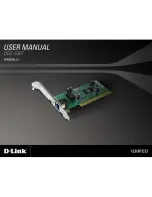
Fabric OS 5.2.x administrator guide 205
The target responds by sending frames to the proxy host. Hosts and targets are exported from the edge
SAN to which they are attached and, correspondingly, imported into the edge SAN reached through Fibre
Channel routing.
Figure 11
illustrates this concept.
Figure 11
metaSAN with imported devices
Routing types
•
Edge-to-Edge
Occurs when devices in one edge fabric communicate with devices in another edge fabric through one
or more Fibre Channel routers.
•
Backbone-to-Edge
Fibre Channel routers can connect to a common fabric—known as a backbone fabric—via E_Ports. A
backbone fabric can be used as a transport fabric that interconnects edge fabrics. Fibre Channel
routers also enable hosts and targets in edge fabrics to communicate with devices in the backbone
fabric, known as “backbone-to-edge routing.” From the edge fabric's perspective, the backbone fabric
is just like any other edge fabric. For the edge fabric and backbone fabric devices to communicate, the
shared devices need to be presented to each other's native fabric.
To do so, at least one translate phantom domain (switch) is projected into the backbone fabric. This
translate phantom switch represents the entire edge fabric. The shared physical device in the edge has
a corresponding proxy device on the translate phantom domain switch.
Each edge fabric has one and only one xlate switch to the backbone fabric. The backbone fabric device
communicates with the proxy devices whenever it needs to contact the shared physical device in the edge.
The FC-FC Routing Service receives the frames from the backbone switches destined to the proxy device,
and redirects the frame to the actual physical device. As with an edge fabric, the translate phantom
domain switch can never be the principal switch of the backbone fabric. Front domains are not created;
rather, only translate phantom domains are created in the backbone fabric.
Devices are exported from the backbone fabric to one or more edge fabrics using LSANs. See
“Configuring LSANs and zoning”
on page -216
for more information.
NOTE:
Secure Fabric OS, Management Server Platform services, and interopmode are not
supported in the backbone fabric
.
Fabric 2
Target
Proxy host
(imported device)
Proxy target
(imported device)
Host
Fabric 1
400 MP
Router
E_Port
E_Port
IFL
IFL
EX_Port
25315a
Summary of Contents for AE370A - Brocade 4Gb SAN Switch 4/12
Page 18: ...18 ...
Page 82: ...82 Managing user accounts ...
Page 102: ...102 Configuring standard security features ...
Page 126: ...126 Maintaining configurations ...
Page 198: ...198 Routing traffic ...
Page 238: ...238 Using the FC FC routing service ...
Page 260: ...260 Administering FICON fabrics ...
Page 280: ...280 Working with diagnostic features ...
Page 332: ...332 Administering Extended Fabrics ...
Page 414: ...398 Configuring the PID format ...
Page 420: ...404 Configuring interoperability mode ...
Page 426: ...410 Understanding legacy password behaviour ...
Page 442: ...426 ...
Page 444: ......
Page 447: ......
















































